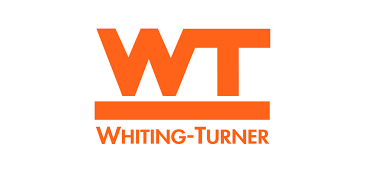Australia's Premier BIM Firms Driving 4D/5D Project Innovation
Imagine standing in the heart of Melbourne, looking down at the immense logistical puzzle of the Metro Tunnel project. Tunnels are being bored deep beneath the city's foundations, while new stations rise from the ground up, all without bringing the bustling metropolis above to a standstill. Thousands of workers, hundreds of machines, and a multi-billion-dollar budget must move in perfect harmony. How do you choreograph such a complex dance? More importantly, how do you ensure it doesn't spiral into a chaos of delays and cost overruns?
This is the challenge facing Australia's construction industry today. Across the nation, from the Western Sydney Airport to Brisbane's Cross River Rail, the scale and complexity of infrastructure and building projects are staggering. In response, Australia's premier engineering and construction firms are moving beyond traditional project management. They are pioneering the use of 4D and 5D Building Information Modeling (BIM), turning digital blueprints into dynamic tools that master the crucial dimensions of time and money.
What If You Could See the Future of Your Project? The 4D Revolution
For decades, the Gantt chart has been the go-to tool for project scheduling. While useful, it’s a static, two-dimensional list that struggles to communicate the complex spatial reality of a construction site. 4D BIM changes this entirely. By linking the 3D project model with the construction schedule, it creates a virtual rehearsal of the entire building process, offering a level of foresight that was previously impossible.
Think of it as a crystal ball for the construction site. Premier Australian firms are using this to:
✅ Perfect the Plan: On a high-rise project in Sydney's dense CBD, a 4D simulation can optimize the daily schedule for crane movements and material deliveries. This virtual planning allows teams to identify the most efficient sequence, minimizing disruption to city traffic and ensuring that materials arrive exactly when and where they are needed, not a moment sooner or later.
🏗️ Create Safer Work Sites: In the resource-rich landscapes of Western Australia, major industrial projects involve complex and often hazardous construction phases. A 4D model allows teams to visualize the work for the upcoming week, identifying potential safety risks where different trades might be working in dangerously close proximity. It transforms safety briefings from abstract talks into clear, visual demonstrations.
💬 Communicate with Unprecedented Clarity: When presenting a major public infrastructure project, a 4D simulation is an incredibly powerful communication tool. It allows firms to show government stakeholders and local communities not just what the finished project will look like, but precisely how it will be built, step-by-step, over the coming months and years. This transparency builds trust and secures buy-in.
Ultimately, 4D BIM is about de-risking the project schedule. It allows teams to solve logistical and safety puzzles on a screen, where the cost of a change is negligible, rather than on-site, where mistakes can cost millions and put people at risk.
Did You Know?
According to a report from the Grattan Institute, Australian governments have historically faced cost overruns on one in three large-scale transport infrastructure projects, with budgets blowing out by an average of 24%. The proactive cost control and risk management enabled by 5D BIM is a direct technological response aimed at solving this multi-billion-dollar challenge.
How Do You Put a Price on a Project Years in Advance? The Promise of 5D BIM
The construction industry's oldest and most persistent headache is cost uncertainty. 5D BIM is the most powerful remedy yet developed. It extends the digital model into the financial realm by linking every single component—from a structural beam down to the last light fixture—to a comprehensive cost database. This transforms the model from a geometric representation into a living, breathing cost estimate.
This has a profound impact on financial management throughout the project lifecycle:
💲 Instantaneous Cost Feedback: In the past, if an architect wanted to explore a different facade material, the process of calculating the cost difference could take weeks of manual work by a quantity surveyor. With 5D BIM, the new material can be swapped in the model, and the total cost impact is calculated almost instantly. This allows for rapid "what-if" scenarios, ensuring design decisions are made with full financial awareness.
🎯 Automated Accuracy: Manual quantity takeoffs are tedious and notoriously prone to human error. 5D BIM automates this entire process. With the click of a button, it can generate a precise count of every component in the project, from cubic meters of concrete to the number of door handles. This improves accuracy, saves hundreds of hours, and leads to more reliable budgets.
📑 Transparent Financial Planning: A 5D model can be used to generate detailed cash flow forecasts that align with the 4D construction schedule. This gives both the client and the contractor a clear picture of expected expenditures over the life of the project, improving financial planning and preventing budget surprises.
The Innovation Multiplier—Where Time Meets Money
The true innovation, and the defining characteristic of Australia's top BIM firms, lies in the integration of 4D and 5D. When the dimensions of time and cost are woven together in a single digital environment, the model evolves into a powerful strategic decision-making tool.
This synergy allows project leaders to ask and answer critical questions in real-time. For instance, "We're facing a potential three-week delay on structural steel delivery. What is the overall cost impact of this delay on the project? What would it cost to pay for expedited shipping, and does that cost outweigh the financial penalty of the delay?" The integrated 4D/5D model can simulate these scenarios, providing the data needed for an informed, strategic response rather than a reactive guess. This is proactive risk management at its finest, turning the digital model into the central nervous system of the entire project.
In a nation renowned for its ambitious and iconic construction projects, mastering the digital dimensions of time and cost is no longer just an advantage—it is the very definition of excellence. Australia's premier firms are not simply adopting these technologies; they are innovating with them, building the nation's future more safely, efficiently, and predictably than ever before.
Australia's Leading BIM Service & Construction Firms
Partnering with a firm that has deep expertise in 4D and 5D BIM is essential for the successful delivery of complex projects. The companies below are among those leading the charge in leveraging digital construction technology across Australia.
Parsons Corp.

Parsons Corporation is a global technology company focused on the defense, intelligence, and critical infrastructure markets. They deliver integrated solutions and services in engineering, construction, and cybersecurity, helping clients solve their most complex technical challenges.
The Whiting-Turner Contracting Co.

A leading national construction management and general contracting company, Whiting-Turner is known for its diverse project portfolio and a strong focus on customer service, quality, and safety. They provide construction services across a wide range of markets, including commercial, institutional, and technology.
HOK

HOK is a global design, architecture, engineering, and planning firm. They are renowned for designing buildings and spaces that respond to the needs of people and the environment, with a portfolio that includes some of the world's most iconic and sustainable structures.
Tesla Outsourcing Services

As an enabler of digital innovation in Australia, Tesla Outsourcing Services delivers the high-fidelity BIM and MEP models that are a prerequisite for sophisticated project controls. The quality and accuracy of their modeling output are what allow premier firms to confidently link time and cost data, unlocking the full potential of a 4D/5D workflow.
PCL Construction Enterprises

PCL is a group of independent construction companies that operates across the United States, Canada, the Caribbean, and in Australia. They are a diversified construction leader, active in the civil infrastructure, heavy industrial, and buildings markets.